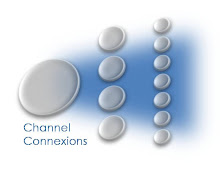There are many small companies building Software-as-a-Service solutions targeting specific applications and vertical markets. There are way too many to list, but you can assume that if there is a software applications out there, somebody is building a SaaS solution. There are a lot of driving factors for the increased emergence of SaaS, but that is not the point of this post. What I want to discuss is how SaaS solutions require a different channel approach than a tradional hardware or software solution.
SaaS companies typically experience an early period of tremendous growth, especially with today's economic climate. Many companies are willing to go to a managed service model with the expectation that they can get equal functionality and QoS, while reducing administrative and operational costs. The challenge that SaaS providers confront is that at some point they will need scale to maintain their growth expectations. Without the capital to build a large, direct sales force, they will need to look at indirect sources.
VARs, solution providers, distributors, and the like have a very defined profit model, one that includes recurring service and support revenues. They expect customer ownership and the ability to up sell and cross sell solutions. They expect revenues from upgrades and service contracts. They expect a transfer of product ownership. They expect manufacturer discounts and incentive programs. All of this changes with a SaaS business model.
It is incumbant on the SaaS provider to find a new model (and perhaps new channels) that creates a profit equation for the channel. Some have tried a sales agency model, others look for OEM channels. These are all great and can work, but there seems to be an opportunity to fundamentally change the model. The smaller, more nimble SaaS startups are in the unique position to be able to try new channel models...experiment, if you will.
I think that the emphasis will eventually change from channel "push" to channel "pull". If companies can create a demand equation...one where there is a community demanding a particualr solution...resellers will find a way to add value. It will come in the form of consulting and integration expertise. It will come in pre-sales engineering and business support. It will be different, but it will come.
These communities will also help in the ongoing development of your software solutions. They will help identify your next feature set. Whether you use an agile development approach or a more traditional approach, this community will have a vested interest in the evolution of your product.
It is good to build a channel that will help facilitate demand, but you cannot ignore the pull side of the equation. Communities of interest is one option to consider.
Thursday, October 30, 2008
Subscribe to:
Post Comments (Atom)




No comments:
Post a Comment